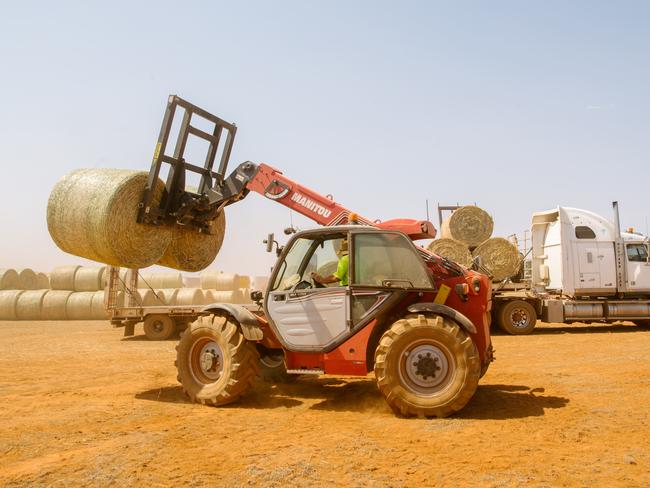Federal budget 2021: Agriculture highlights
From biodiversity to water, plus the extension of the ever-popular instant asset write-off — here’s everything farmers need to know out of the budget.

A big spend to ramp up Australia’s biosecurity system remained the standout for agriculture in tonight’s federal budget.
Farmers’ pleas for more investment to build the nation’s agricultural workforce long-term were answered, as was more funding for on-farm biodiversity, while the ever-popular instant asset write-off was extended yet again.
BIOSECURITY
The bulk of the biosecurity spend was announced prior to tonight, and includes another $58.6 million toward the prevention of an African swine fever outbreak, $67.4 million to boost Australia’s biosecurity preparedness, and $34.6 to improve research and field tools.
An extra $29.1 million to help combat established pests and weeds announced tonight takes the total biosecurity spend to $400 million.
The budget papers also reveal that industry will pay for about a third of the $96.9 million set aside to manage risks from hitchhiker pests in imported cargo. The department will cover $60.5 million of the program over four years.
AGRICULTURAL WORKFORCE
Almost $30 million will go toward new measures aimed at growing agriculture’s workforce long-term, including $10 million to create a new pathway into the sector for young people.
There’s little that will help the current workforce shortages however, with no moves to allow backpackers back in to Australia, or increase the number of seasonal workers coming into the country.
INSTANT ASSET WRITE-OFF
Welcome news to farmers and machinery dealers alike is news the Government will extend full expensing for depreciable assets until June 2023.
The popular scheme was introduced last budget and was meant to finish in June 2022. It allows businesses with a turnover of less than $5 billion to fully deduct the costs of depreciable purchases.
“This has seen spending on machinery and equipment increase at the fastest rate in nearly seven years,” Treasurer Josh Frydenberg said in his budget speech.
“A tradie can buy a new ute, a farmer a new harvester and a manufacturer expand their production line.”
ON-FARM BIODIVERSITY AND LAND MANAGEMENT
The Government’s new biodiversity stewardship program — which rewards farmers for increasing biodiversity on their land, such as by planting trees — will move from the pilot phase to wider implementation, with $22.3 million to expand the scheme.
Work will continue on a biodiversity certification scheme — which will give farmers a tick of approval for their biodiversity credentials, and is being developed by the National Farmers’ Federation — with $5.4 million, and $4.4 million to develop a biodiversity trading scheme.
There’s also $129.8 million to deliver the National Soils Strategy, which should be finalised next month.
Of that, $102 million will go toward incentivising farmers to increase soil testing, and $20.9 million to improve understanding of our soils.
Industry can also take advantage of $59.6 million, out of the $1.2 billion low-emissions technology fund. The cash will be used to trial new agricultural feed technologies that could reduce emissions from livestock, as well as innovations in soil carbon.
FREIGHT AND SUPPLY CHAINS
The Government is increasing the Heavy Vehicle Road User Charge from July this year, offsetting a $73 million decrease in expenditure from the fuel tax credit.
The heavy vehicle charge will go from 25.8 cents per litre to 26.4 cents per litre. Budget papers state the change was agreed by federal and state transport ministers.
There is more funding for the National Freight and Supply Chain Strategy, including $16.5 million for a national freight data hub.
TRADE
Agricultural exporters will be disappointed to see there was no commitment to extend the International Freight Air Mechanism beyond September this year.
The popular program has been extended three times already, and has proved vital in getting agricultural exports overseas during the COVID-19 pandemic. With high freight costs and delays likely to continue well into next year, industry has already warned this program could be crucial for some time yet.
While the NFF was looking for a decent trade spend that would build a long-term trade strategy for agriculture — particularly in the wake of ongoing tensions with our biggest customer, China — the Government has instead set its sights on boosting Australia’s participation in international forums such as the World Trade Organisation.
There is $15 million to “enhance our reputation and promotion of Australia’s interests” in standard-setting bodies.
“The Government will work with partners to drive WTO reform to ensure the
system continues to serve Australian interests,” Foreign Minister Marise Payne and Trade Minister Dan Tehan said in a statement.
“We will use the WTO’s dispute settlement system so that Australian businesses and producers can compete fairly in markets around the world.”
Australia has already taken China to the WTO over its barley tariffs, and could follow suite over tariffs imposed on the wine industry.
FINANCIAL ASSISTANCE
The Government is committing $14.7 million over three years to waive farm business income reconciliation debts up to the 2019-20 financial year. That’s in line with the recommendations of a recent review into FHA.
The rural financial counselling service will also receive another $8.5 million to continue running in 2021-22, including to provide support to rural and regional small businesses affected by drought, COVID-19 or bushfire.
WATER
Another $25 million will extend the On-farm Emergency Water Infrastructure Rebate Scheme until June 2022.
There is $3.5 million to establish a panel to look at how transparency the water market in the Murray Darling Basin can be improved, as per the recommendations of the ACCC’s water markets inquiry.
FORESTRY
The Government is finally delivering on its election promise to provide concessional loans for new plantation developments, with $37.5 million available through the Regional Investment Corporation.
A further $10.6 million will go toward new and existing regional forestry hubs.
MORE
WHAT REGIONAL AUSTRALIA GETS FROM THE BUDGET

